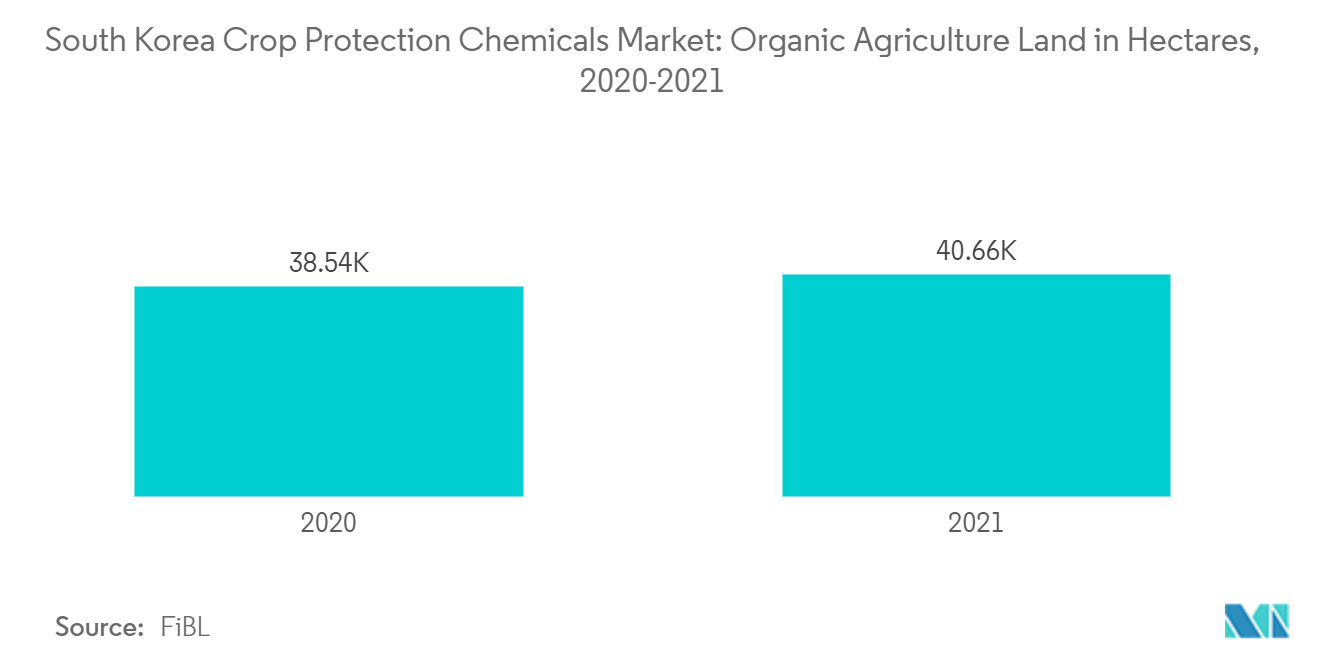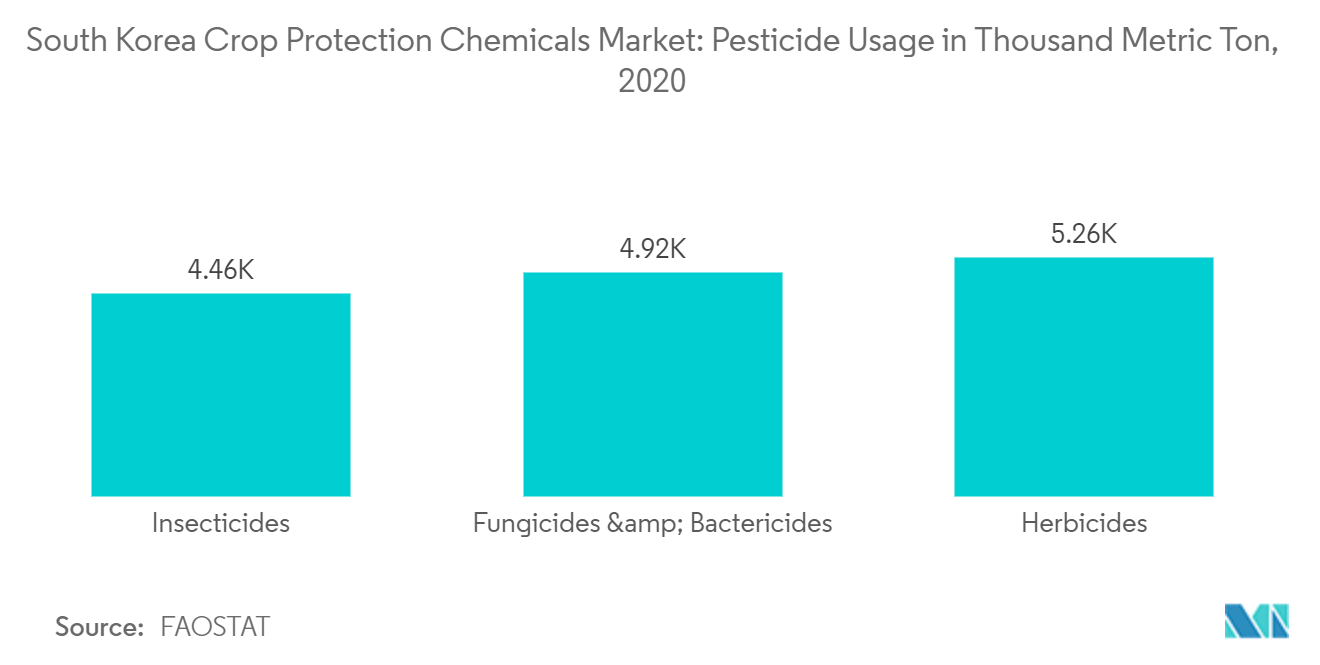Market Trends of South Korea Crop Protection Chemicals Industry
Increasing Use of Microbial Pesticide
- After the pandemic, a significant proportion of the population-461,000 in 2019 to 495,000 in 2020, or 7.4% more than the previous year-moved into farming. As a result of the growing emphasis on environmental sustainability, the South Korean government implemented Environment-Friendly Agriculture (EFA) policies that aim to promote pesticide residue safety and the use of only registered brands of agrochemicals.
- In addition, severe punishment will be implemented if there is any violation of these regulations. The growth of biological products and the reduction in the use of synthetic chemicals are both fueled by these regulations.
- Insects like thrips and mites are resistant to chemical insecticides. Therefore the only option to manage them is by using bio-insecticides. As a result, farmers are turning to bio-pesticides or insecticides. In South Korea, farmers use biopesticides, especially before harvest, to reduce chemical residues.
- The government of South Korea has been actively attempting to help farmers in switching to the former to increase income and meet demand. According to FiBL, in 2021, the organic area in the nation increased from 38,540 hectares the previous year to 40,663 hectares.
- Compared to conventional farming, the South Korean Ministry of Agriculture estimated a reduction of around 18,062 tonnes of chemical fertilizers and roughly 834 tonnes of pesticides. With higher profit margins and escalating demand, many farmers are attempting to switch to organic farming. This will promote and accelerate the market's growth during the forecasted period.

Herbicides are the Largest Segment
- Since 2001, South Korea's use of agricultural pesticides has gradually decreased after increasing from 1970 to 1990. Pesticide usage has been declining. In 2020, 16,278 metric tonnes of pesticides were used, down from 16,745 metric tonnes the year before. This decrease can be attributed to farmers being more aware of bio-pesticides and, in some cases, the pandemic effect on the nation.
- To prevent human diseases and environmental degradation, the Korean government has put into effect a new regulation that aims to promote pesticide residue safety and requires farmers to strictly abide by product labels and instructions regarding the application on crops, application frequencies, application rate, and other crucial safety precautions. This will guarantee and promote the segment's growth during the coming years.
- A total of 88% of transgenic plants grown worldwide are tolerant to one or more herbicides, the vast majority of which are glyphosate. For instance, crops like soybeans, maize, oilseed rape, cotton, and rice are tolerant to herbicides. In South Korea, the herbicides that transgenic plants' tolerate,' such as glyphosate or glufosinate ammonium, are non-specific. As a result, their use has become widespread, and herbicide doses have increased. Thus, herbicide use has increased in the country over the last three years. According to Food and Agriculture Organization (FAO), herbicide use in agriculture increased by 5259 thousand metric tons in 2020, which increased compared to the previous year. These factors are expected to boost the segment in the coming years.

